
 Data Structure
Data Structure Networking
Networking RDBMS
RDBMS Operating System
Operating System Java
Java MS Excel
MS Excel iOS
iOS HTML
HTML CSS
CSS Android
Android Python
Python C Programming
C Programming C++
C++ C#
C# MongoDB
MongoDB MySQL
MySQL Javascript
Javascript PHP
PHPPhysics
Chemistry
Biology
Mathematics
English
Economics
Psychology
Social Studies
Fashion Studies
Legal Studies
- Selected Reading
- UPSC IAS Exams Notes
- Developer's Best Practices
- Questions and Answers
- Effective Resume Writing
- HR Interview Questions
- Computer Glossary
- Who is Who
How to Automatically Merge Blank Cells Above/Left in Excel?
Merging is one of the most complicated processes in Excel. If we merge the cells incorrectly, data may be lost and cannot be recovered. We can use the process mentioned in this article to do it more carefully, which only considers empty cells. This tutorial will help you understand how we can automatically merge blank cells above or left in Excel. Combining multiple cells together is known as merging.
Automatically Merge Blank Cells Above
Here we will insert a VBA module and then run it to complete our task. Let us see a straightforward process to understand how we can automatically merge blank cells above in Excel using the vba code.
Step 1
Consider an Excel sheet with data similar to the one shown in the image below.
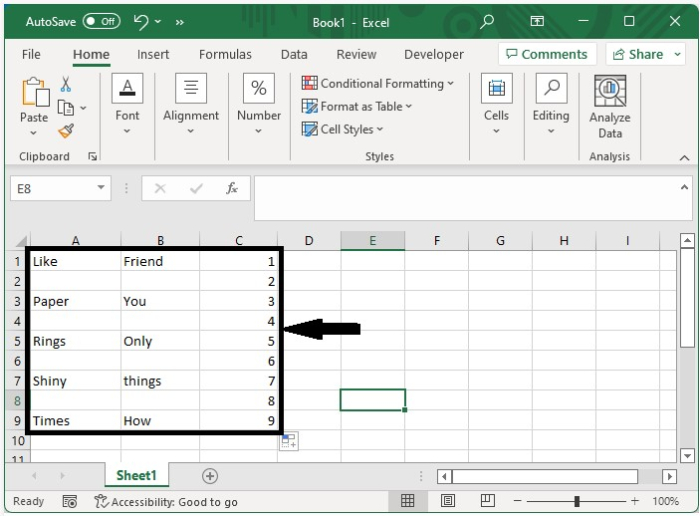
To open the VBA application, right-click on the sheet name and select View Code, then click on the inset and select Module, and type Program 1 into the text box as shown in the below image.
Example 1
Sub MergeCells() 'Update By Nirmal Dim xRg As Range Dim xCell As Range Dim xAddress As String On Error Resume Next xAddress = Application.ActiveWindow.RangeSelection.Address Set xRg = Application.InputBox("Select a range:", "Choose the Range", xAddress, , , , , 8) If xRg Is Nothing Then Exit Sub For Each xCell In xRg If xCell.Value = "" Then Range(xCell, xCell.Offset(-1, 0)).Merge End If Next End Sub
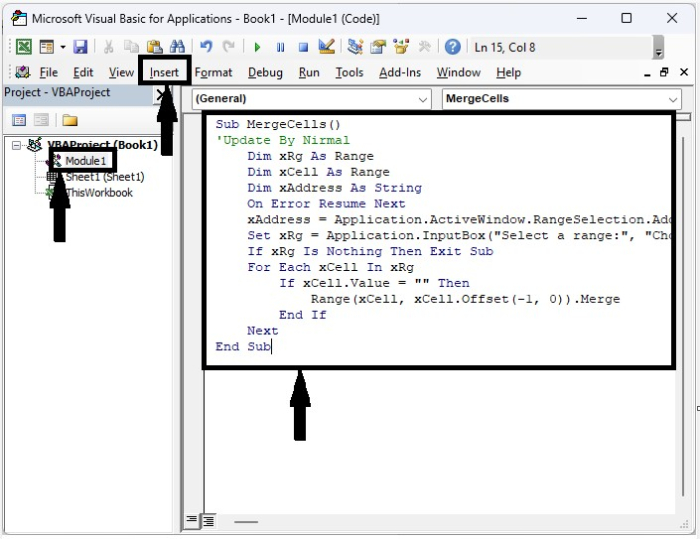
Step 2
Now click on F5 to run the VBA code, then in the pop-up, select the range you want to merge, and click on OK.
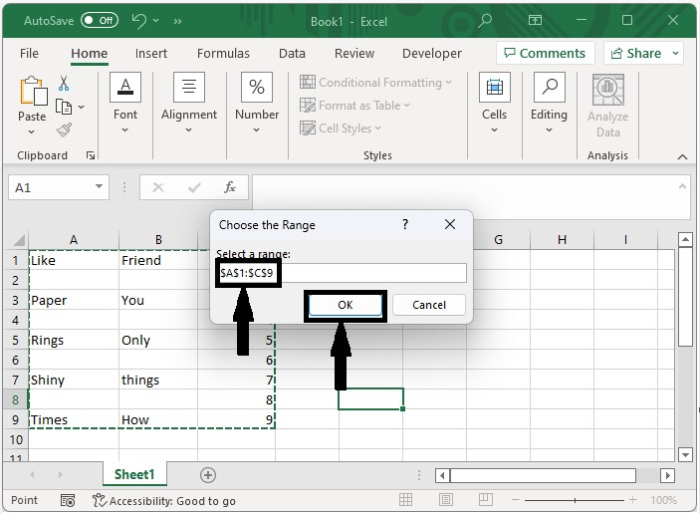
Our final output will look like the below image.
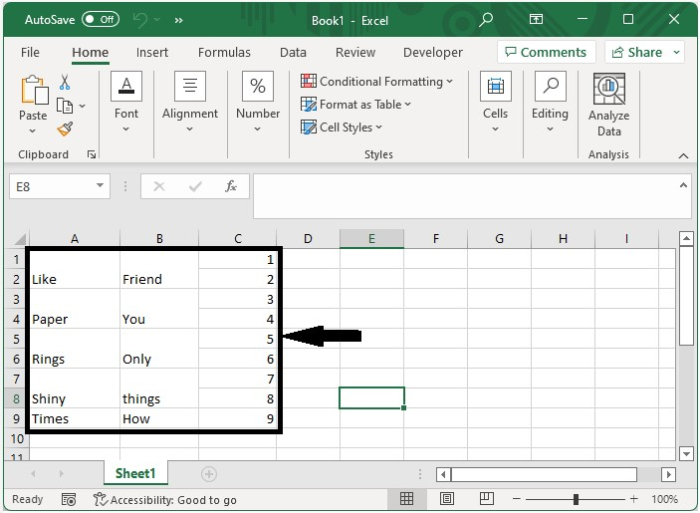
If you only want to allow mering for one of the cells above, use Program 2 in the VBA application.
Example 2
Sub mergeblankswithabove() 'Updated By Nirmal Dim I As Long Dim xRow As Long Dim xRg As Range Dim xCell As Range Dim xAddress As String On Error Resume Next xAddress = Application.ActiveWindow.RangeSelection.Address Set xRg = Application.InputBox("Select a range (single column):", "Choose the Range", xAddress, , , , , 8) If xRg Is Nothing Then Exit Sub If xRg.Columns.Count > 1 Then MsgBox "Only work for single column", , "Range selected" Exit Sub End If xRow = xRg.Rows.Count Set xRg = xRg(xRow) For I = xRow To 1 Step -1 Set xCell = xRg.Offset(I - xRow, 0) Debug.Print xCell.Address If xCell.Value = "" Then Range(xCell, xCell.Offset(-1, 0)).Merge Next End Sub
Automatically Merge Blank Cells Left
Here we will insert the VBA module and then run it to complete our task. Let us see a straightforward process to understand how we can automatically merge blank cells. left in Excel using the VBA code.
Step 1
Consider an Excel sheet with data similar to the one shown in the image below.
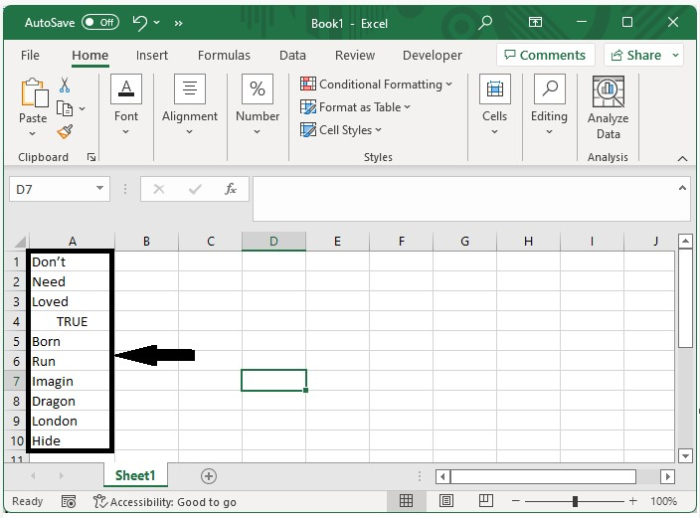
To open the VBA application, right-click on the sheet name and select View Code, then click on the inset and select Module, and type Program 3 into the text box as shown in the below image.
Example 3
Sub mergeblankswithleft() 'Update by Nirmal Dim xRg As Range Dim xCell As Range Dim xAddress As String On Error Resume Next xAddress = Application.ActiveWindow.RangeSelection.Address Set xRg = Application.InputBox("Select a range:", "Range to merge", xAddress, , , , , 8) If xRg Is Nothing Then Exit Sub For Each xCell In xRg If xCell.Value = "" Then Range(xCell, xCell.Offset(0, -1)).Merge Next End Sub
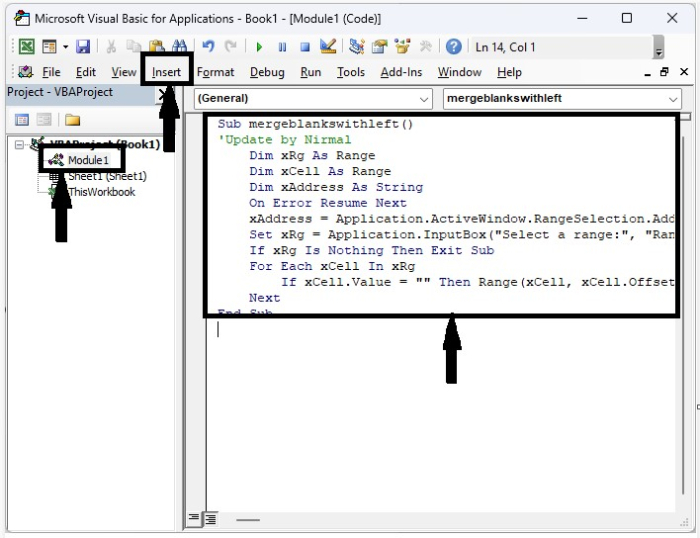
Step 2
Now click on F5 to run the vba code, then in the pop-up, select the range you want to merge, and click on "OK." Our final output will look like the below image.
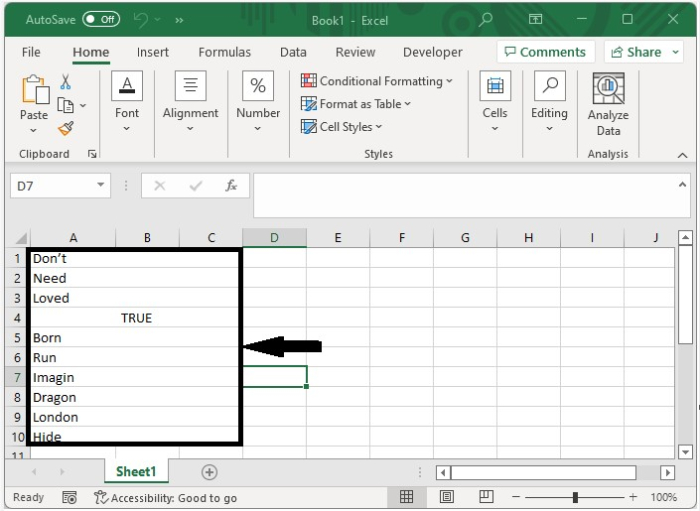
Conclusion
In this tutorial, we used a simple example to demonstrate how we can automatically merge blank cells in Excel.

